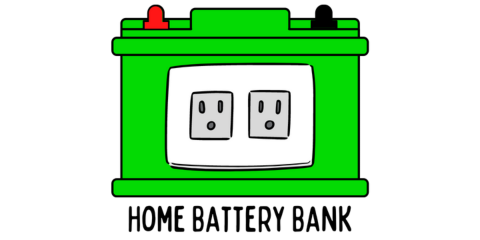Charging a car battery seems pretty easy, right? You just take any charger with any amp rating and hook it up to your car battery. What could go wrong?
While the process of hooking up a car battery to a charger is relatively easy, there are some nuances of the process that you’ll want to keep in mind to ensure that your battery is not damaged and that you’ll maximize its potential lifespan.
With too few amps, your battery will take forever to charge. With too many, you risk fire or explosion. How many amps should you charge your car battery at?
Charging a car battery at 4 to 7.5 amps is the safest and most efficient. Charging amps in this range will allow the battery to be completely charged overnight and will not be at risk of overcharging. A three-stage or smart charger is recommended for the best results.
That’s the quick and easy answer, but there are a few things you want to watch out for. Let’s quickly dive into this topic to ensure you stay safe and your car battery lives as long as possible!

How Many Amps to Charge Your Car Battery At
At this time, nearly all car batteries are lead-acid. They might be flooded lead-acid, which is where you can pop the cap off to check the electrolyte inside. They might be sealed, where you cannot check the electrolyte inside. Either way, they will fall into the lead-acid category.
With that being said, it is best to use a charger with an amp rating that is about one-tenth of the total amp-hour capacity of a lead-acid battery or less.
For example, if you knew that your battery was rated at 100 amp hours, you would want to use a charger that was rated at 10 amps or less. If your battery was rated for 50 amp hours, a 5 amp charger would be suitable. Most vehicle batteries will fall between 50 and 70 amp-hours, so a 5 to 7.5 amp charger would be ideal.
Keeping the amp rating of your charger in this range allows your battery to fully charge overnight, but it also is gentle enough on the battery to give it a thorough charge as well as not damaging it through overheating and electrolyte loss.
The problem with car batteries is that they are rarely labeled on the sticker with amp hours. You will typically see a reserve capacity or cranking amps or cold-cranking amps.
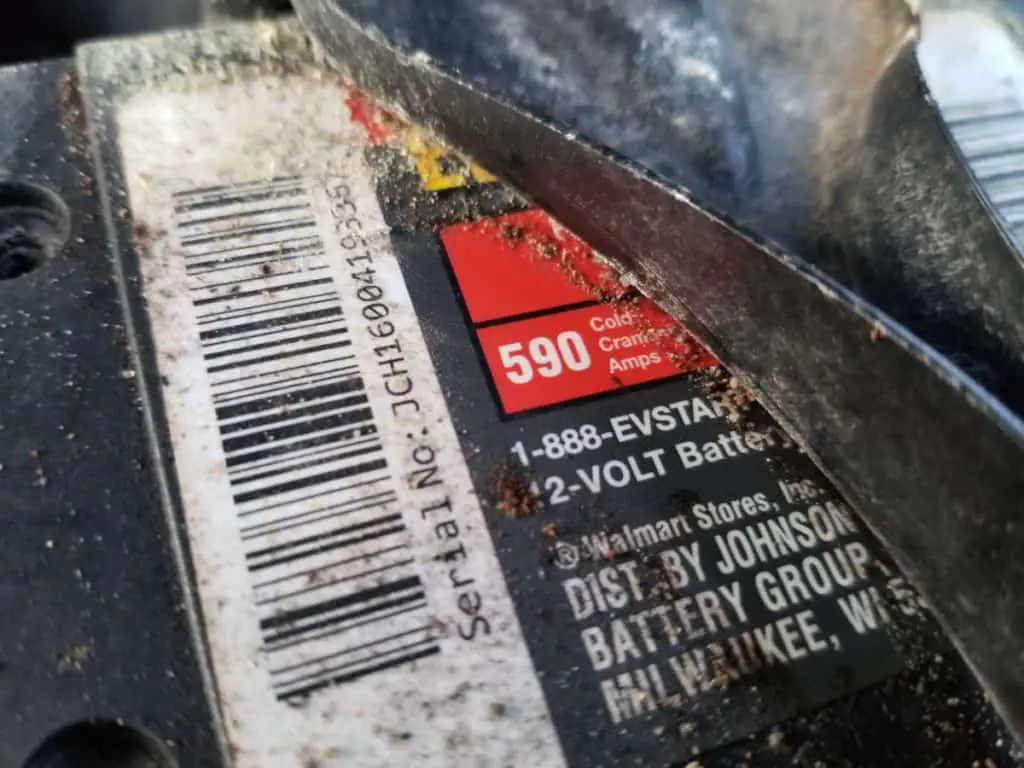
Converting Cranking Amps or Reserve Capacity over to Amp-Hours is not a direct relationship. It would be like saying that your car can go from 0 to 60 miles per hour in 6 seconds and then you trying to figure out how many miles per gallon it will get when you go 60 miles an hour. They’re all different measurements for different purposes.
Regardless I have a table here that will give you a good ballpark estimate of how many amp hours your battery is rated at just by looking at the cold-cranking amps or the reserve capacity number that is on the sticker on top of your battery.
Amp Hour Estimates Based On Cold Cranking Amps or Reserve Capacity
| If Your Sticker Reads: 200-315 CCA, or 40-60 RC | If Your Sticker Reads: 315-550 CCA, or 60-80 RC | If Your Sticker Reads: 550-1,000 CCA, or 80-190 RC |
| 36 - 46.2 AH | 46.2 - 58.8 AH | 58.8 - 111 |
If you’re wondering how I achieved these numbers, you can check out my full article here why go into the methodology of how I calculated all of the values of this chart.
Now that you have seen the estimated amp hours of most car batteries here on the table, you can easily see that 10% or less for most car batteries is going to be in the 2-amp to the 7.5-amp range.
Having a 4 to 7.5 amp smart charger that will enter into a float or maintenance mode when it is done charging is the most ideal charger for your car’s battery. Common amp ratings for chargers in this range will be four, five, six, and seven and a half.
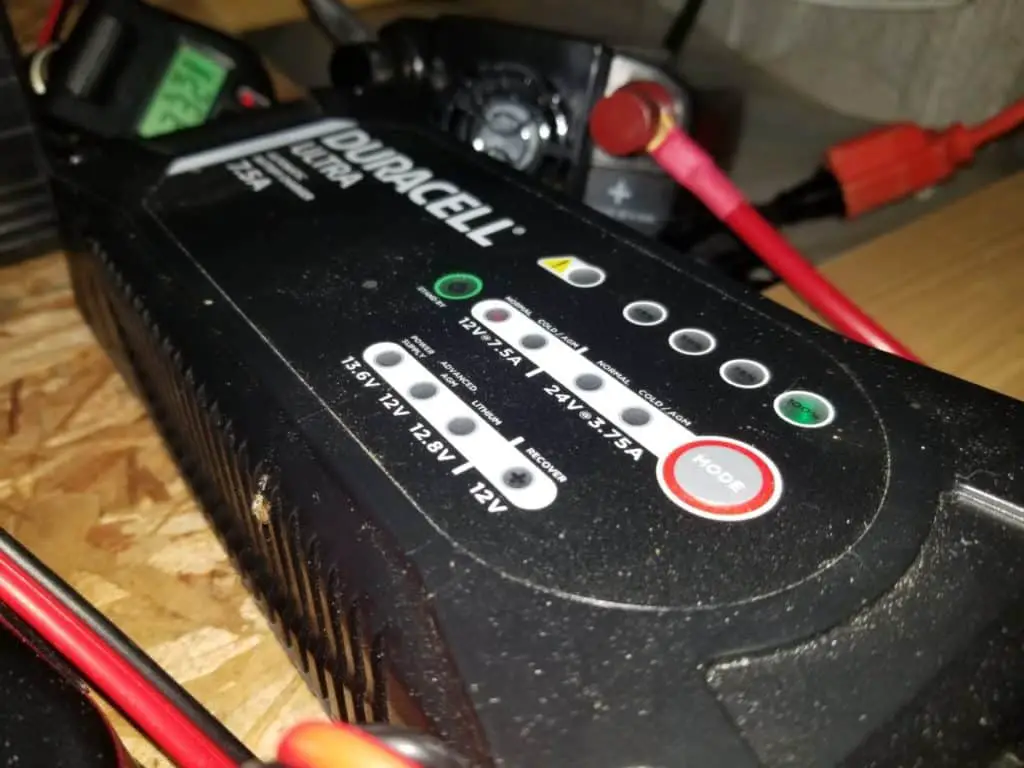
While a 2-amp charger is certainly safe for your vehicle’s battery, it can take up to three days to fully charge your vehicle’s battery depending on how depleted it is and the size of the battery itself.
I personally recommend either of these two Chargers for your vehicle’s battery needs. I have used this charger seen on Amazon daily for over 6 years and have been very happy with its performance for both my vehicle batteries as well as my home battery bank for backup power.
This charger has a slightly higher amp rating and is of great quality as well. If you are a little pressed for time I would go with this charger but both chargers will get your battery topped off if you start charging in the evening and go to drive your vehicle again in the morning. This charger is primarily marketed towards boat owners for their marine batteries because it can be mounted, but it is perfectly safe to use on your car’s battery.
How Long Does it Take to Charge a Car Battery
Now, if you’re looking to see just how long it will take to charge your car battery with any amp charger, then I have an article here with full charts for any size car battery and all of the common charging amps so you can find your particular battery and your particular charger.
This article that I wrote has easy-to-use calculators where you can simply plug in your values and you’ll find your charging time as well!
Do Amps Matter when Charging a Battery?
Amps certainly matter when it comes to charging your car battery. Most vehicle batteries are 12-volts and you will see that somewhere on the sticker of the battery. Just because you grab any 12-volt charger doesn’t mean that it’s going to be the right fit for your battery. The amps that the charger supplies (the current that is being pressurized by the voltage) can either safely charge your battery or utterly destroy your battery.
Amps matter when charging a battery because if you use a charger with an amp rating that exceeds 10% of your battery’s total amp-hour capacity, you begin running the risk of an inefficient charge, excess heat build-up, lost electrolyte, or worse.
For example, if you had a 50 amp hour battery and a 5 amp charger it would probably take you about 10 to 12 hours to fully charge that battery from a completely dead state of charge.
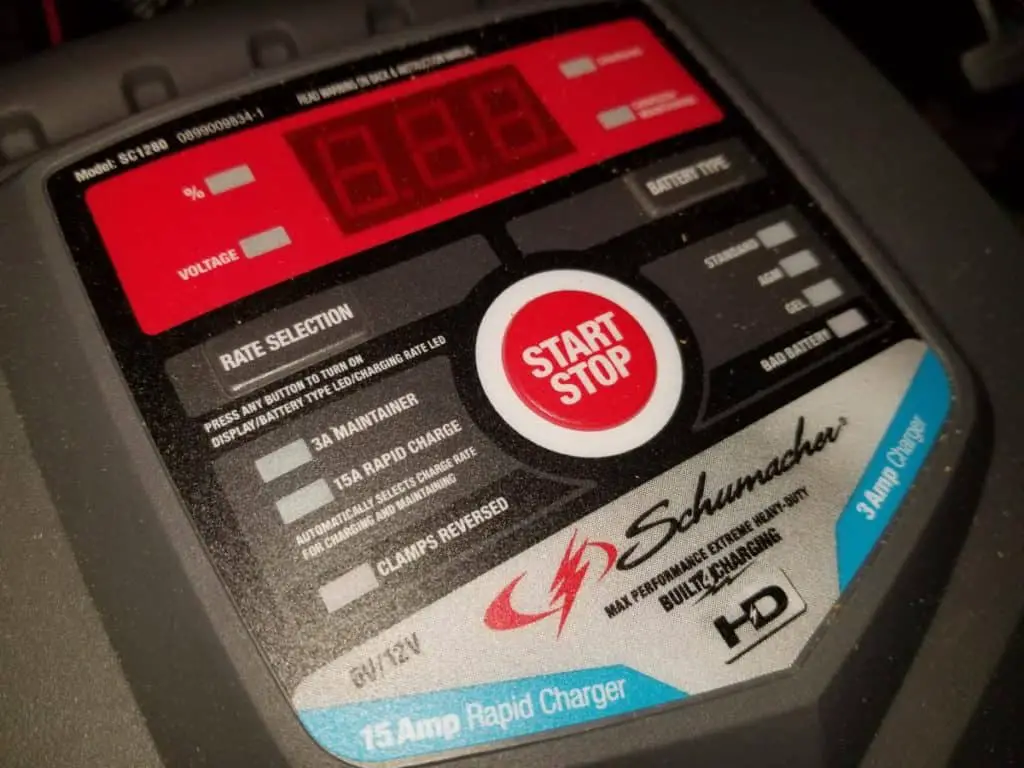
If you had that same one hundred amp hour battery and hooked it up to a 50 amp charger, the amperage would exceed the battery’s ability to convert electrical energy into stored chemical energy. When this happens the battery has to do something with the excess electricity that cannot be converted.
What happens is a process called electrolysis, where the excess electricity begins to essentially boil the electrolyte inside the battery. Excess heat is built up through this boiling process, and the electrolyte is evaporated out of the battery.
Sealed lead-acid batteries can recombine evaporated electrolytes up to a certain point, but when you greatly exceed that threshold then even they will release that evaporated electrolyte as a means to depressurize the battery.
Once electrolyte is evaporated and not replaced fast enough, then the lead plates inside the battery will be exposed to air and they will suffer immediate and irreparable damage through oxidation.
If the charging continues and electrolyte continues to boil off, more and more of the plates will be exposed, and your battery can eventually undergo thermal-runaway and catch fire and/or explode.
So yes, amps certainly matter when it comes to charging your car battery. It is best to stick with a charger ranging from 2 to 7.5 amps (no higher than 10-amps), and I recommend something on the higher side of that range to ensure that your battery will be charged overnight.
If you have a 10 amp charger, I would not throw it away, just use it cautiously and monitor it frequently when charging to make sure that you’re not experiencing any of the things that I listed above.
How Many Amps do I need to Charge a 12v Battery?
It is safest to keep your charging amps at 10% or less of the total amp hours of your battery to not damage your battery or harm yourself in the process.
For most vehicle batteries that will be anywhere from two amps up to about 7.5 amps. A 10-amp charger is really is as high as you should go.
If your 12-volt system is a bunch of marine batteries or golf cart batteries hooked up together, then you might find your amp hours in the 200 range, 400 range, or even higher.
In that case, having a 5 amp charger is going to be a very slow charge for you and you should scale up the amps that your charger can deliver until the charger output is 10% of the total battery amp hour.
Should I charge My Battery at 2-amps or 10-Amps?
It’s a common question for people to ask whether they should charge their car battery at 2 amps or 10 amps. The safest option would be to use the 2-amp charger, however, the length of time that you’ll have to wait for your battery to be fully charged, especially if it’s severely depleted, can last for days.
That is not practical for most people unless you’re not going to be driving for a couple days.
A 10-amp charger still probably tolerable for most vehicle batteries even though it will be about 20% of the capacity of the battery’s total amp-hours.
The charge won’t be as thorough, since a slow low amperage charge allows the battery to internally convert electrical energy into chemical energy more efficiently and effectively. As a result of the higher charging amps, there might be some excess heat generated during the charging process which could lead to increased internal pressures and electrolyte loss.
If you choose to use the 10 amp charger, just be sure to check on your battery frequently to make sure that it’s not hissing, bubbling erratically, hot to the touch, or bulging out the sides.
Key takeaway: A 2 Amp charger will be safer, especially for smaller car batteries, but can take a full day or more to charge. A 10-amp charger is starting to get on the high side for most small to mid-range car batteries but can be used to ensure a faster charge as long as you monitor the state of your battery for safety during the charging process.
Can I Charge a Car Battery at 50 amps?
Using a 50-amp charger on a car battery that averages a capacity of 50 amp-hours is extremely dangerous. Doing so will exceed the battery’s ability to convert electrical energy into stored chemical energy and will damage or destroy your battery and could cause bodily harm.
A 50-amp charge will result in an inefficient charge, increased internal pressures, excess heat, bulging sidewalls, decreased electrolyte, a boiling or hissing sound, oxidized plates, and eventually fire or explosion if the charger is left on too long. Hopefully, you’ll at least be using a smart charger that will cease charging before it gets to that point!
Some battery chargers are advertised with up to three different amperage ratings like “2/10/50”. The 2 and the 10 are the actual “charging” amps, and the 50 is only an assist feature to help a weak battery start an engine. It should be used as a “jump-start” and not as a charge.
Can you Overcharge a Battery at 2 Amps?
Assuming your car battery is low enough that you feel it necessary to hook up an actual battery charger, charging at 2 amps can take quite a while just to reach a full charge, let alone overcharge it.
You can certainly overcharge a car battery at 2 amps provided you are not using a smart charger the automatically enters into float mode when the battery reaches 100% state of charge. If the battery is constantly fed to amps after it is fully charged, the electrolyte will slowly evaporate due to overheating and your battery will die if left connected.
Do I need to Disconnect My Car Battery before Charging It?
Disconnecting your car battery before charging it is not necessary as long as you are using a microprocessor-controlled smart charger. These chargers are sophisticated enough to not cause any damage to your vehicle’s electronics.
My buddy, who has been a mechanic for 25 years, told me that he has never had an issue with anyone using a smart charger to charge their car battery while it is connected. He did say that if you have an older charger that is NOT microprocessor-controlled, that you should err on the side of caution and disconnect your battery first before charging.
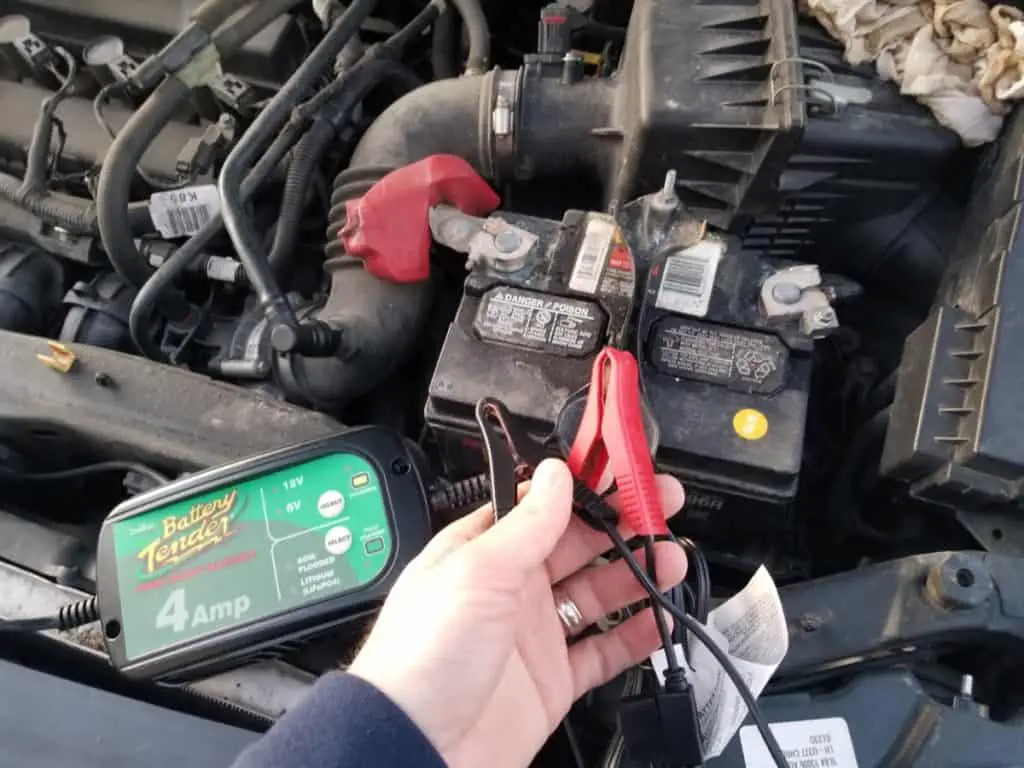
What if My Charger isn’t Working on My Dead Battery?
If you hook up your charger to your battery and it refuses to start the charging process, this is not due to you having insufficient amps or too many and your charger.
This is due to your battery’s voltage being too low for your charger to recognize it.
Modern Chargers, are microprocessor-controlled and have many safety features to prevent electricity from flowing through the cables unless they are indeed hooked up not only to an actual battery but to the right terminals of the battery as well.
For the charger to recognize that it’s hooked up to a battery, it must recognize a minimum voltage to overcome the threshold and engage the charging process.
This minimum voltage will vary based on the manufacturer, but generally, it’ll run about 9.5 to 10 volts.
To overcome this problem, you’re either going to have to get an older charger that is not microprocessor-controlled and will emit a current regardless of the state of charge of the battery, or you will need to get another vehicle battery and hook jumper cables in between them for a little bit.
Just allow the good car to be running while it passes electrical current into the bad battery for a few minutes. This will give it an artificial surface charge and as long as you hook up the battery charger immediately after you disconnect the jumper cables, it should recognize that minimum voltage and engage the charging process.
I haven’t had to do this to a vehicle battery, but I have done this method with a vehicle battery to give a slight boost to a lawnmower battery in order to get a charger started and it worked just fine.
